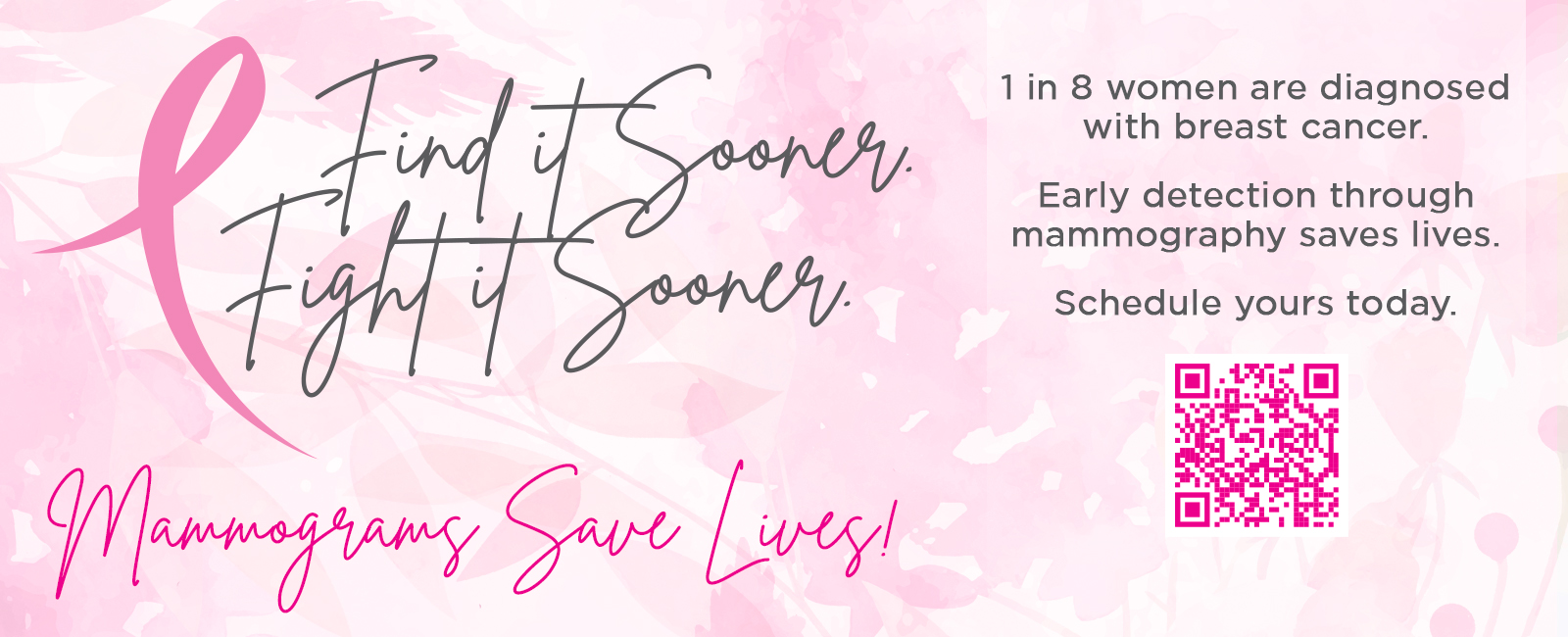3D MAMMOGRAPHY

WHAT IS MAMMOGRAPHY?
Mammography examines the breast using low-dose x-rays. Mammography is important for early detection of breast cancers because it can show change in the breast before a patient or physician can feel them. Mammography is considered the most effective tool for early breast cancer diagnosis, which most medical experts agree is essential for successful treatment.
3D MAMMOGRAPHY
A BETTER MAMMOGRAM
What is 3D mammography? Tomosynthesis, or 3D mammography, can produce clearer images for evaluation. This is particularly helpful for women with dense breasts, as it allows clearer images of dense tissue. Dense breast tissue can mask abnormalities or create false positives on images.
How do you know if you have dense breasts? Density refers to breasts with more glandular and connective tissue than fat—not breast firmness. So, a mammogram is the only way to know breast density. Speak with your doctor or mammography provider if you want more information or want to confirm your breast density.
Who should have a mammogram?
For women who have a normal risk of breast cancer, the American Cancer Society and the American College of Radiology recommends annual mammograms beginning at age 40. The National Cancer Institute recommends that women who have had breast cancer and those who are at increased risk due to genetic history talk to their doctor to see if they should receive annual mammograms before age 40.
Before scheduling a mammogram, you should discuss any problems or pain in your breasts with your doctor. Generally, the best time to schedule a mammogram is one week following your period. Do not schedule your mammogram for the week before your period if your breasts are usually tender during this time.
How do I prepare for a mammogram?
Mammograms are quick, non-invasive procedures that don’t require typically special preparation. However, there are a few things to remember on the day of your mammogram:
- Do not wear lotion, deodorant or powder under your arms or on your breasts
- Describe any breast problems you are experiencing with your technologist
- Remove all jewelry and clothing from the waist up
- Always inform your technologist if there is any possibility you are pregnant
What should I expect during a mammogram?
To image your breast, an x-ray technician will position you near the machine and your breast will be placed on a platform and compressed with a paddle. Breast compression is necessary to:
- Spread out the tissue so that small abnormalities aren’t obscured
- Reduce radiation dose and improve picture sharpness
- Hold the breast still to eliminate image blurring
The technologist will go behind a glass shield while the image generates. You will be asked to change positions slightly between images—typically twice per breast—to ensure a comprehensive view of both breasts. Mammograms typically only take about 10 minutes. When your examination is over, you may resume your normal daily activities unless otherwise instructed by your doctor. One of our board-certified radiologists will review the images and send a report to your physician.
